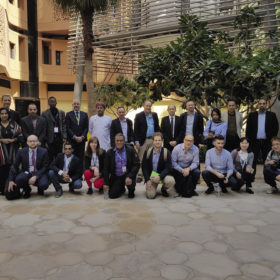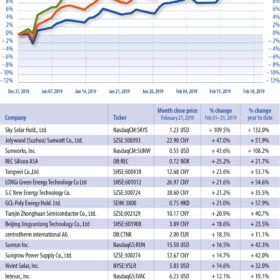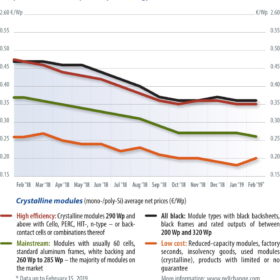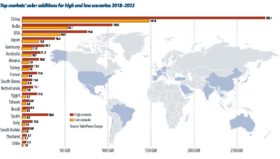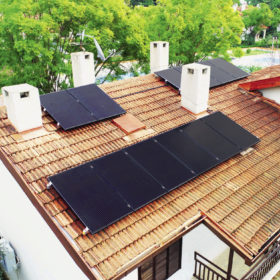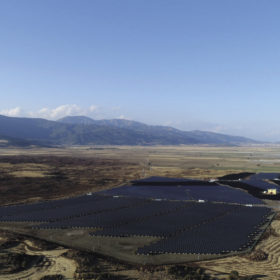Stay flexible, it’s necessary
Sometimes it’s necessary to stick to your guns, follow that in which you believe, and stay the course. But other times, you need to stay flexible and adjust to what’s in front of you. And in the solar and cleantech sector in general, the latter is more often the case than the former. This is […]
PV feeling the spring fever
The investor sentiment in the solar sector was very strong in February. Month-to-date (MTD), the Guggenheim Solar ETF (TAN) increased 4.7% versus the S&P 500 and Dow that gained 2.6% and 3.4% respectively. The sector outperformance was mainly driven by China’s potential new solar policy which reintroduces PV subsidies at the national level, and also […]
Groundhog Day…
Numerous indicators point to an impending sharp decline in PV installations, at least in Germany, after March 31.
Availability is poor, prices have largely stagnated since the beginning of the year, and manufacturers have postponed or canceled promised deliveries from Asia. As a result of monthly reductions in feed-in tariffs, we are now seeing a full-fledged run on the few lots of modules still available on short notice. With each passing month, anxiety mounts over whether urgently needed components will be delivered on time. When deadlines are broken, installers face harsh contractual penalties, while system operators rack up major losses. Yet module producers seem to be taking all this in stride.
China’s PV policy still under discussion
Although the National Energy Administration (NEA) held a seminar to talk about the development of the 13th five-year plan last November, a positive signal for domestic demand, the Chinese government still has not released new official targets for solar, as of February 2019.
Inverter suppliers go digital
More than 11 million PV inverters will be shipped in 2019 alone, and most of these will be connected to a software platform and controlled by the inverter companies. This creates an opportunity for suppliers to create new models and revenue sources, writes Cormac Gilligan, research and analysis manager at IHS Markit. And indeed, in recent years inverter suppliers have been rapidly developing ‘Internet of things’ software platforms to take advantage of this.
The best laid plans…
China’s mid-2018 bombshell announcement concerning its domestic solar program changed overnight the trajectory of the global solar industry, and this is not hyperbole. To recap, changes included temporarily halting utility-scale deployment, lowering the FIT, shifting economic responsibility to the provincial governments, and, in a related move, attempting (one more time) to control the country’s debt problem.
What sustainable solar means to Turkey
There is no denying that Turkey is an ideal fit for a major solar market and key player in the PV sector, located on the border between east and west. But while the country has shone as a solar star this decade, writes Eren Engür, Managing Partner at Icarus Energy, it is quickly fading as the government has failed to promote a sustainable solar sector. However, this could be about to change.
Exponential or slow growth?
The Turkish solar market finds itself at a crossroads in 2019, with previous policy settings coming to an end and more questions than answers being raised by recent government efforts. While the YEKA projects to date have delivered little in terms of installations, Muren Guler from Global Energy Ltd believes that ‘Mini YEKA’ could provide just the boost manufacturers, suppliers, and developers are looking for.
The land of the Crescent Sun
Despite its abundant solar resources, Turkey’s potential for solar energy development remains largely untapped. Although the market grew considerably between 2017 and 2018, the outlook for the next two years, due to the macroeconomic situation and the current regulatory framework, appears rather gloomy. If regulations will not be changed, and tenders for large-scale solar remain unimproved, unsubsidized PV and self-consumption may remain the best options available to seek more growth.
Mega projects, mega problems
The clouds gathering over Turkey’s 1 GW solar park in Konya, the first YEKA tender, are dominating discussions among PV players in the country. Developments surrounding the Konya tender illustrate the Turkish solar market’s challenges, as the country’s unsteady economy and its policy preference for local manufacturing appear to be acting as a break on installations.
